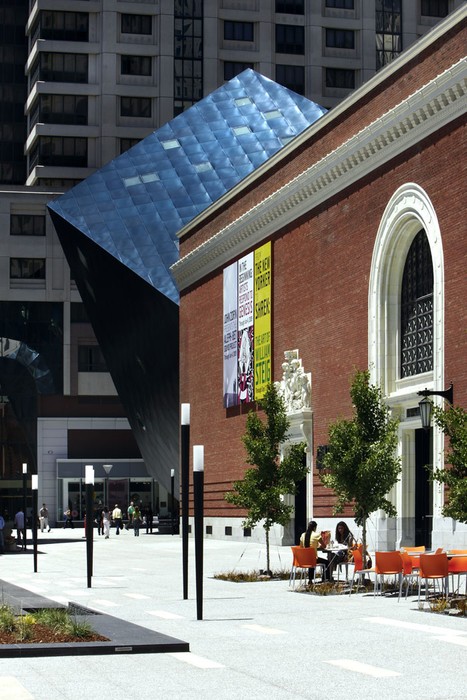Contemporary Jewish Museum
Introduction
Text-to-speech Audio
Images
A view of the CJM showing both the old Power Substation and the new, metallic installation.

Backstory and Context
Text-to-speech Audio
The Contemporary Jewish Museum (CJM) is a landmark of the San Francisco area, with its current building serving as an art piece itself. The Museum was originally founded in a small gallery near San Francisco’s waterfront in 1984, where it began its mission to make the Jewish experience relevant for a modern audience, and to encourage modern Jews to open up about themselves and their lives through dialogue. Though the CJM flourished as it was, the San Francisco Redevelopment Agency offered the Museum the chance to develop the Jessie Street Pacific Gas and Electric Power Substation in 1994.
It was not until 1998 that the CJM selected an architect, Daniel Libeskind, to design the new building. In formulating his new look, Libeskind decided to design the building after the Hebrew characters which spell “L’Chaim” which means “To Life.” As Jewish tradition dictates that letters actually participate in the stories that they tell, Libeskind found it fitting to have the letter-designed buildings serve as educational and exhibition spaces. Although design began in 1998, the building itself was not completed until 2005.
The current Contemporary Jewish Museum was built right into the Power Substation with two large, metallic cubes serving as new spaces for exhibitions and performances. The two cubes cut right through parts of the old substation, resulting in a design that evokes a fusion of the old and the new, with the red brick of the Power Station fusing with the metallic blue of the cubes. It is this fusion that symbolizes the marriage of Jewish culture and our contemporary times.
Sources
"Contemporary Jewish Museum." Studio Libeskind. Accessed March 26, 2017. http://libeskind.com/work/contemporary-jewish-museum/.
